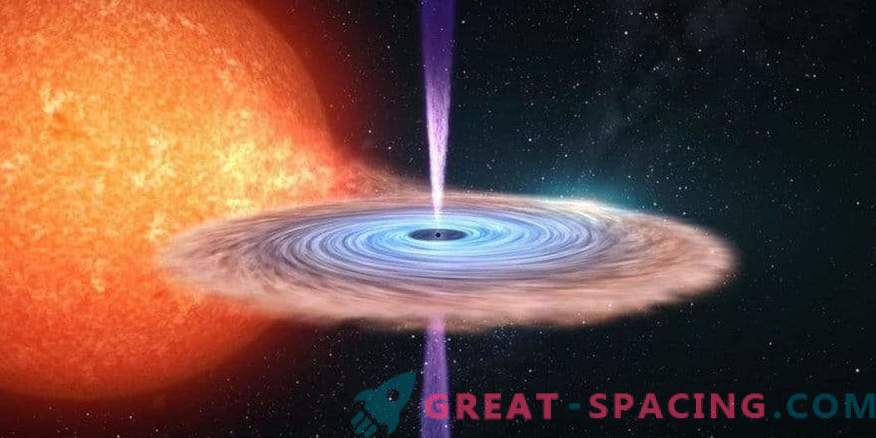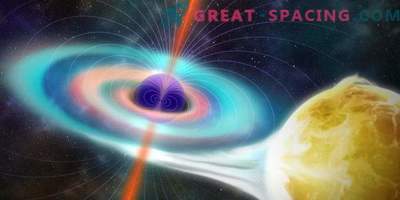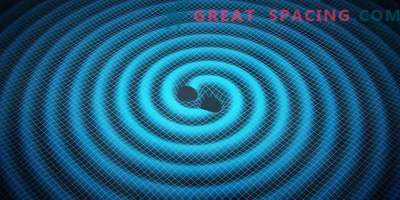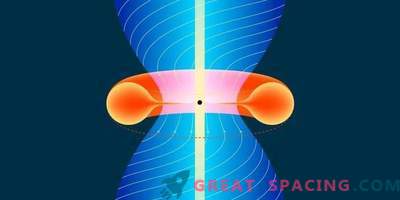
Artistic vision of astrophysical jets emanating from the V404 Cygni binary system
In space, the natural Death Stars lurk - super-powerful jets of energy firing from the neighborhoods of black holes. The team of researchers managed to get closer to solving the mysterious cosmic phenomena - relativistic jets. To do this, it is only necessary to measure how quickly they are “activated”.
One theory says that they develop on the territory of the accretion disk. Extreme gravity inside it rotates and stretches the magnetic fields, squeezing the hot magnetized material (plasma) until it breaks in the form of magnetic pillars.
Plasma moves in streams and gains rapid acceleration, firing into space. In the end, it shines brightly, but how and where it happens is not yet clear. To find out, scientists conducted multi-wave observations of the V404 Cygni dual system - a star and a black hole. The system is distant by 7800 light years and exceeds solar massiveness 9 times. One of the brightest flashes recorded in 2015. It was also possible to track the 0.1-second delay between X-ray flashes from a black hole and the formation of flashes of light, marking the acceleration of the jet plasma. This difference was expressed in 30,000 km.
For the first time, the delay was captured at the moment of activation of the reactive plasma jet. This allowed us to deduce the critical distance at which the plasma is obliged to accelerate to the light indices.
The study also found a connection between the system and supermassive black holes located in galactic centers and exceeding black holes of stellar mass billions of times. It is believed that this jet physics applies to all black holes.
X-rays were recorded on a NASA NuSTAR telescope, optical light — a Herschel telescope, and radio waves — an AMI-LA radio telescope.










































